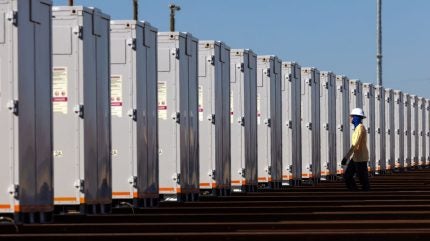
California and Texas are now the leading states in the deployment of grid-scale power sector battery systems in the US.
Collectively, the two states account for 72% of operational battery networks and 65% of battery networks in development.

Discover B2B Marketing That Performs
Combine business intelligence and editorial excellence to reach engaged professionals across 36 leading media platforms.
According to the US Energy Information Administration (EIA), California registers 9.92GW of currently deployed utility-scale batteries, the largest total in the country. Texas lies second, registering 4.83GW.
Grid connected utility scale batteries allow state energy supplies to store excess electricity at times of high output, allowing companies to then discharge the electricity stored during times of peak consumption.
Large-scale BESS are often viewed as a necessary step in the energy transition, with much of the electricity stored coming from renewables.
Currently, the California Independent System Operator, the state’s main electricity provider, provides around 17% of its electricity from BESS at time of peak demand, according to gridstatus.io. The share of electricity provided is higher than the electricity provided by wind farms and hydropower dams over the same period.

US Tariffs are shifting - will you react or anticipate?
Don’t let policy changes catch you off guard. Stay proactive with real-time data and expert analysis.
By GlobalDataAccording to Power Technology’s parent company, GlobalData, cumulative installed capacity of energy storage technology in the US in 2023 registered 6.1GW.
If the total battery projects in development in the US are completed by 2026, the network total would be 49.11GW.
Texas is set to overtake California as the leading state with deployed utility scale batteries with 12.43GW in developments, with its total equalling 17.26GW.
California has 6.07GW in planned capacity, taking its battery network to 16GW.
Both states will retain 70% of the total battery network after project development is complete.
Arizona (1.81GW), Nevada (1.13GW) and Florida (561MW) are other states with significant battery network capacity. Arizona will be the third-largest power battery user in the US once its 2.62GW pipeline completes development.
Currently, 19 states do not have any plans to integrate battery power technologies into their electricity system. This can be attributed to an over-reliance on fossil fuels, or the fact that they use fossil fuels to balance their electricity grid when renewable generation is unable to deal with demand.
However, declining costs and increasing electricity demand has made battery power systems more popular across the US, with 31 states having battery storage capacity plans in development.





